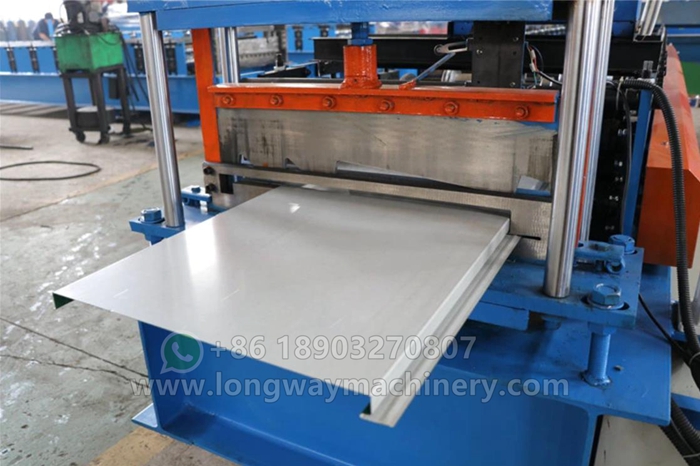wall sheet roll forming machine
The Wall Sheet Roll Forming Machine Revolutionizing Construction Material Production
In the ever-evolving construction industry, efficiency, precision, and durability are paramount. Among the groundbreaking technologies that have transformed the production of construction materials is the wall sheet roll forming machine. This innovative equipment plays a crucial role in manufacturing steel wall sheets, providing builders and architects with high-quality materials that meet the demands of modern construction.
Understanding Wall Sheet Roll Forming Machines
Wall sheet roll forming machines are automated systems designed to convert flat steel coils into specific wall panel profiles. The process begins with feeding a galvanized or color-coated steel coil into the machine. The coils are then progressively shaped into desired forms through a series of rollers that bend the metal into a predetermined profile. This process not only enhances the aesthetic appeal of wall panels but also delivers superior strength and durability.
One of the most compelling advantages of wall sheet roll forming machines is their capability for mass production. These machines can operate at high speeds, significantly reducing the time required to produce wall sheets. For instance, a high-performance roll forming machine can produce thousands of square meters of wall paneling on a daily basis, allowing construction projects to adhere to strict timelines without compromising quality.
Versatility in Design
Another aspect that highlights the value of wall sheet roll forming machines is their versatility in design. Depending on the specific requirements of a project, these machines can be customized to produce various wall sheet profiles, including corrugated, trapezoidal, and flat sheets. This adaptability makes them an essential tool for contractors, as they can easily create unique designs that cater to different architectural needs.
wall sheet roll forming machine

In addition, the ability to incorporate insulation materials during the production process is becoming increasingly popular. Some advanced models allow for the integration of insulated panels, which provide improved energy efficiency and thermal comfort for buildings. This not only meets regulatory demands for energy conservation but also enhances the overall living and working conditions within the constructed spaces.
Cost-Effectiveness and Sustainability
From a financial perspective, wall sheet roll forming machines provide a cost-effective solution for construction material production. The automation of the manufacturing process reduces labor costs while minimizing material wastage. Since the machines are designed to maintain high levels of precision, there is little room for error, which helps in optimizing materials. Moreover, many manufacturers are adopting environmentally friendly practices by using recyclable materials, further contributing to sustainability in construction.
The continuous improvement in technology also means that modern roll forming machines are equipped with advanced control systems. These systems not only ensure consistent quality output but also allow operators to monitor production in real-time. This integration of technology enhances operational efficiencies and enables quick adjustments to meet changing demands.
Conclusion
The wall sheet roll forming machine stands as a testament to the innovations occurring within the construction industry. By providing a reliable, efficient, and customizable solution for manufacturing wall panels, these machines are not only transforming the way buildings are constructed but are also setting new standards for material quality and sustainability.
As the construction industry continues to grow and evolve, understanding and embracing such technologies will be critical. Wall sheet roll forming machines are not just tools of production; they symbolize a shift toward smarter and more sustainable building practices, paving the way for future advancements in construction methodologies. With ongoing developments in automation and material science, these machines will undoubtedly continue to play a vital role in shaping the buildings of tomorrow.
-
Roof Panel Machines: Buying Guide, Types, and PricingNewsJul.04, 2025
-
Purlin Machines: Types, Features, and Pricing GuideNewsJul.04, 2025
-
Metal Embossing Machines: Types, Applications, and Buying GuideNewsJul.04, 2025
-
Gutter Machines: Features, Types, and Cost BreakdownNewsJul.04, 2025
-
Cut to Length Line: Overview, Equipment, and Buying GuideNewsJul.04, 2025
-
Auto Stacker: Features, Applications, and Cost BreakdownNewsJul.04, 2025
-
Top Drywall Profile Machine Models for SaleNewsJun.05, 2025








